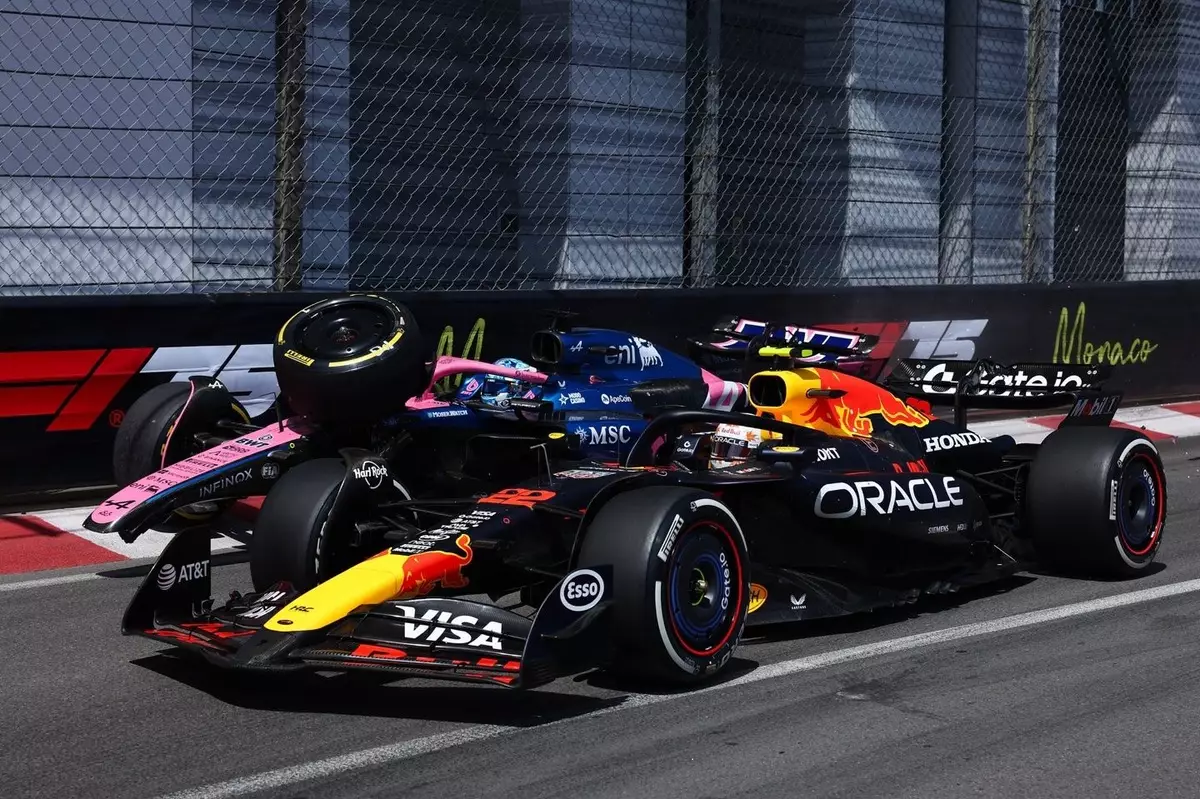In the high-speed world of Formula 1, every decision, every movement, can become fodder for drama. Pierre Gasly’s assertion that his collision with Yuki Tsunoda during the Monaco Grand Prix stemmed from Tsunoda’s erratic driving highlights the fragile tension that often exists between teammates. It’s a classic case of racing instincts versus responsibility, and the fallout may have implications that extend beyond just one race. Gasly’s characterization of the incident as a mistake on Tsunoda’s part calls to attention the nuances of racecraft that can make or break a driver’s performance.
Gasly articulated his side of the story with a certain conviction, claiming he was left with very few options as Tsunoda seemingly changed his line under braking. His explanation presents a scenario where he felt compelled to act swiftly and decisively—however, it raises questions about whether agility or better foresight should have dictated his movements in the first place. Tsunoda, quick to counter, insisted he did nothing out of the ordinary, framing his approach as defensive rather than reckless. This disagreement isn’t merely a spat; it embodies the high-stakes atmosphere that defines Formula 1 racing.
Communication Breakdown: The Complexity of Racing Tactics
Gasly’s commentary that “he’ll leave the space” brings into focus an interesting aspect of racing culture—trust. Trust between drivers, particularly those from the same team, can be a double-edged sword. The nuanced expectations of teammate dynamics are often tested in real-time during intense competition. Tsunoda’s vehement denial of wrongdoing suggests he believed he was executing a rational strategy by maintaining his position while being aware of Gasly’s potential maneuvering. This raises another layer of complexity: can one rely on another driver to adequately gauge the situation and make decisions that ensure both safety and competitive integrity?
Formula 1 is not only a test of speed but also a battle of wits. Every racer must constantly gauge their surroundings and learn how to coexist with fellow competitors. Tsunoda’s claim that he was “hugging the wall” articulates an understanding of track limits and spatial awareness that is crucial in a tightly contested race. While Gasly may feel justified in his critique of Tsunoda’s driving, one might argue whether both drivers had the situational awareness necessary to avert disaster, or if they were victims of the environment that Monaco inherently fosters.
The Alpine Struggle: Performance in the Spotlight
Beyond the personal drama between Gasly and Tsunoda lies the larger picture of Alpine’s ongoing struggle within the 2023 Formula 1 season. The team’s performance in the Monaco Grand Prix was particularly disheartening, with their worst qualifying session leading to disappointing race results. Gasly’s assessment of the car’s shortcomings—especially regarding its ride quality—highlights a persistent issue that doesn’t just impede individual drivers, but also jeopardizes the entire team’s standing in the championship.
The Monaco circuit is infamous for exposing any vehicle weaknesses, and it appears the Alpine A525 did not stand up to scrutiny. Racing on such a challenging circuit often magnifies underlying deficiencies that could otherwise be masked on faster, more forgiving tracks. Gasly’s admission that they are “lacking compliance” speaks volumes about the need for improvement not just in engineering but also in optimizing strategies to meet the unique demands of each circuit—something the team sorely needs as they look toward the future.
Looking Ahead: Optimism for Spain
As the dust settles on the Monaco incident and Alpine’s lackluster performance, there remains a glimmer of hope as the racers turn their sights to Barcelona for the next Grand Prix. Gasly’s optimism suggests a renewed opportunity to exploit the high-speed facets of the Spanish circuit, where past performances revealed greater potential for the A525. It is a chance not only for redemption but also for a team to recapture some confidence that has clearly been shaken.
The glaring differences between the low-speed challenges of Monaco and the aerodynamic demands of Barcelona may serve as a crucial reset for Gasly and the Alpine team. This contrasts the recent adverse outcomes with the potential for renewed focus and determination to translate past learnings into performance upgrades and strategic refinements. In Formula 1, even looking to the future can be as thrilling as the races themselves, with every moment holding the promise of a turnaround.
In the end, the Monaco incident serves as a microcosm of the F1 world—intense, passionate, and filled with room for improvement, not just as racers but as a cohesive unit. The evolving relationship between Gasly and Tsunoda is worth watching, as it embodies the continual dance of partnership, rivalry, and growth that defines motorsport.


Leave a Reply